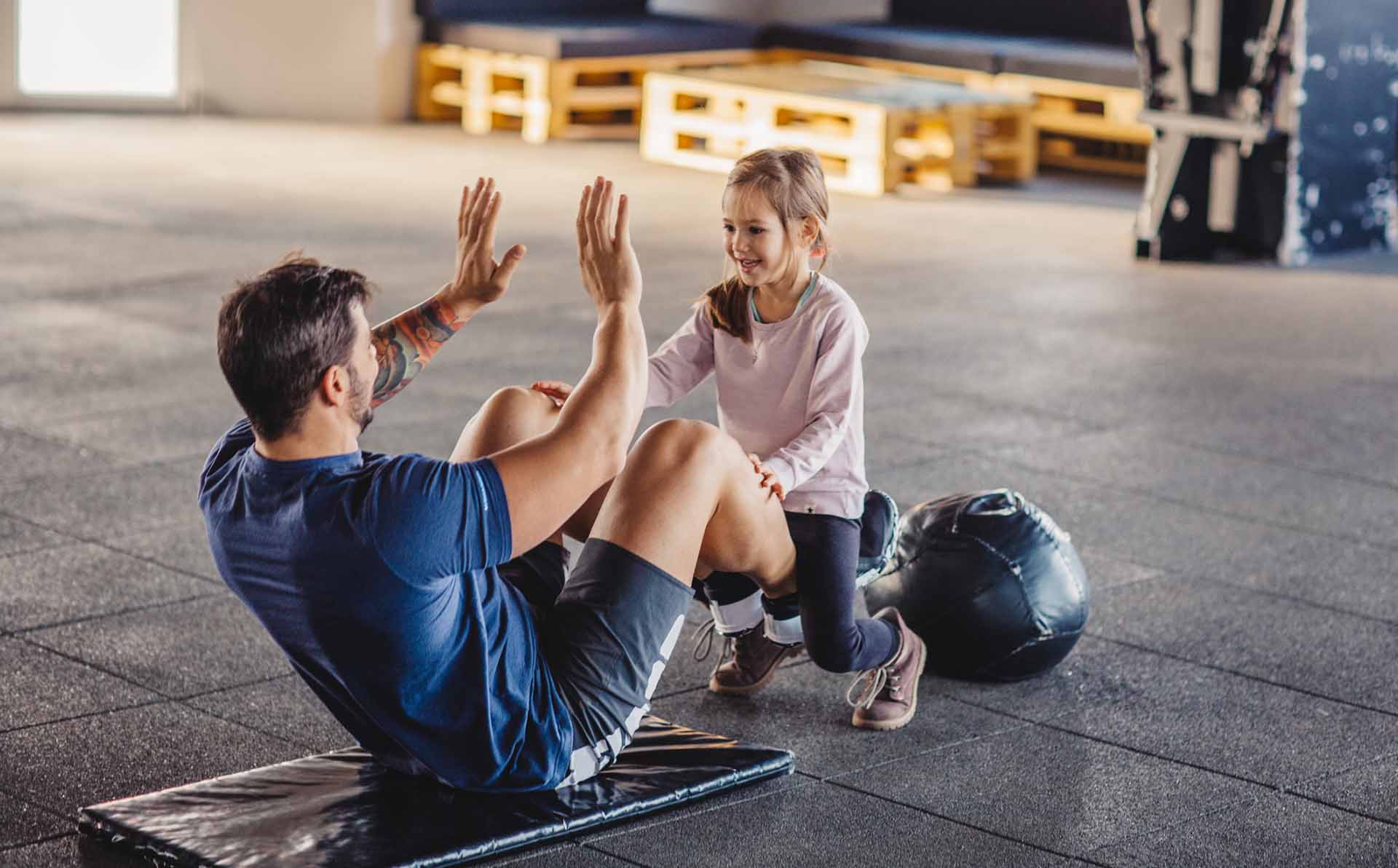-
Workouts and training will always be hard work – they're meant to be! But fitness is also meant to be fun. That’s what makes it sustainable over the longer term. When it’s enjoyable and you have little incentives to keep going, it makes a big difference.
As kids we create fun games to make mundane things seem more exciting, so why not as adults? Fun and play turn our focus away from any pain or discomfort we might be feeling, so you don’t even really remember that you’re working out.
Gamifying your workout is one of the simplest ways that you can inject some fun and motivation, and also track your progress over time. Here are some ways you can make your workout more like a game.
Set a rep challenge
Count your reps completed in each session and challenge yourself on your previous record. You might go for the highest rep count for a set of exercises while maintaining correct technique.
Alternatively, set the number of reps and see how fast you can complete it. How quickly can you row 500 m while maintaining correct technique?
Get yourself a fitness tracker
This will enable you to set all sorts of little challenges for yourself, whether it’s number of steps in a day, calories burned in a workout or effort based on your heart rate zones.
Download an app
There are all sorts of fun fitness apps that help you turn common types of exercise into a game, whether it’s running away from zombies or taking on a superhero role.
Play with intervals
If you’re out running, use trees, street lights and other markers to create little games for yourself for some interval training. Sprint as fast as you can to that tree 50 m away, or tell yourself you’re going to do box jumps on the park bench until you see someone walking a dog, or until you spot a red car.
Try the tunnel workout
Tunnel workouts are a great way to integrate partners into your workouts and relive the tunnel ball philosophy, but with exercises. Have a series of exercises you are going to do and complete each exercise at a certain amount of reps, with a partner behind you. The partner or partners cannot start each exercise until you have completed your reps.
How to make your workout a game

-
Let cards or dice guide you
Assign a specific exercise to each number on the dice or to each suit in the deck. Then start rolling or dealing!
Use music in a new way
Try playing a game where you challenge yourself to complete a certain activity by the end of the song, or sustain an activity for the length of the song.
Reward yourself
Remember as kids when your parents would give you a sticker on your wall chart if you did a chore? Why not make a chart for yourself and set some tangible goals, identifying in advance what your reward will be if you achieve it.
Play make-believe
Use your imagination to create a challenge and inject some child-like wonder into your workout. Imagine the ground is suddenly super hot – how do you get from one side of the playground to the other, touching the ground as little as possible? Or you can pretend every fifth crack in the pavement is actually a hurdle that you have to jump high over. People may think you’re a little strange – but who cares!
Set up a FaceTime workout with friends or family
This is a great way to stay connected with friends and family who might live overseas or far away, and share a common interest in fitness while catching up.
Just find something you love
The key to learning to love your workout is to find an activity you really like. The beauty of the fitness industry is that there are so many options out there. If you like to train in a group, or you need music to train or you want to train solo – whatever it is, identify what makes you tick and go for it.
Once you give yourself that little push, you’ll find the exercise itself will enhance your state of mind, making it easier to do it again. When you put your body under stress, like when in a workout, your body releases endorphins, which make you feel good.
All of this sets you off in a direction of positive thinking, so you’ll end up saying to yourself, “Hey this is actually good for me. As much as I am hating doing a burpee, I know it’s what I need right now.”
Work out with Todd at Sydney’s Coaching Zone.
-
Stretches for gym enthusiasts
8 stretches to help you cool down from workouts
-
Stretches for office workers
Stretch out your back and relieve stress
-
Stretches for runners
Stretch your legs, hips and back after a long run
-
How to walk 10,000 steps
Discover how to easily reach your goal of 10,000 steps daily.
-
Everything you need to know about parkrun
Been wondering what a parkrun looks like? Where do you go? What do you do? How do you sign up? Find out here.
-
Five ways to exercise when on a budget
You don’t need to spend money on gym memberships just to meet your fitness goals. Here are five free ways to stay healthy and active when you’re living on a budget.
Subscribe to receive the best from Live Better every week. Healthy recipes, exercise tips and activities, offers and promotions – everything to help you eat, move and feel better.
By clicking sign up I understand and agree to Medibank's privacy policy






